










Bank cum CPPC system was long digitized- so the other basic “Jumla” USP by which they (including Defence Minister/Secretary) are deceiving the Prime Minister by giving him the feedback that MoD is increasing the digitization footprint towards achieving the Digital India goals.

For the past two years, SPARSH has been a significant topic of discussion in both print and electronic media, particularly in various social groups. This comprehensive article by Cdr Ravindra Pathak and Wg Cdr Ravi Mani provides a detailed overview of SPARSH and its implications for military and retired military personnel. It aims to adequately inform all readers about the subject and associated issues. We urge you to circulate and publicize this information, ensuring it reaches the policymakers and top executive decision-makers who can act in the best interests of military personnel and pensioners.
The question arises: who is the best person to address and rectify this apparent discrepancy? What options do armed forces personnel and their hierarchy, including the Defence Minister, have to correct this issue?.
Ideally, a team comprising users/CGDA (SPARSH), TCS, and representatives from all three services should be formed to understand and resolve all related issues.
Attached is a paper written jointly by Commander Ravindra Pathak and Wing Cdr Ravi Mani.
This integrated system for automation of sanction and disbursement of Defence Pension was formulated in 2017 and launched in July 2021 with the stated objective of providing a single window only for Defence Pensioners to avail all Pension related services, including the facility to view their Pension details, Pension entitlement, view and manage Pensioner profile details, Income Tax forms etc.
It was also based on the premise of good and extensive internet connectivity even in remote rural areas including an online facility for grievance redressal and correction of any data/ details of Pensioners.
The system had aimed at:

Having been conceived in the air-conditioned portals of the HQ Controller General of Defence Accounts in the National Capital with good connectivity, it was to be the new system to replace a well working and well settled system (now called the Legacy system) which had its own hiccups initially but had the advantage of easy accessibility at the door step through bank branches with human touch and interaction by concerned Bank Staff who were paid Rs 12/- per month per pensioner for all the services.
The issues faced by pensioners in the legacy system were largely on account of incorrect data received from Office of the Principal Controller of Defence Accounts (Pension) who transcribed personal information provided by Service HQ/Defence Ordnance Factories etc. It was also due to absence of knowledgeable staff( due to rotation of Bank’s branch staff) or delayed payments due staff’s lack of knowledge on Defence Pension Regulations and the myriad Circulars..
With banks setting Central Pension Processing Cells (CPPC) which largely led to data integration and by and large timely and accurate payment of pension. Even with the system as it exists/existed if the bank delayed payments the RBI had mandated payment of interest on delayed payment due reason attributed to banks. The errors in the database, however small in number in relation to the numbers serviced, remained an issue.

However, the advantages of the CPPC system were:
Now let us examine if the new system has actually maintained the advantages of the legacy system.
| CPPC System | SPARSH |
| Personal touch and interaction | Only with PCDA(P) or DPDO |
| Minimal need for any digital knowledge on part of pensioner | Digital knowledge mandatory or dependence on others (possibility of being scammed) |
| Ease of communication in local language | Only internet communication with PCDA(P) or DPO |
| Easy accessibility | Pensioners need to travel to reach out for help in case of any problems as the Common Service Centers are not near their residence |
| Introduction of CPPC leading to digitization reducing delays in pension disbursement and speedier grievance resolution | The heavy digitization has become a major problem for digitally handicapped |
| Banks paid interest for delayed in payments due banks fault. | In SPARSH there is no such provision so no fear of penalty for negligence. |
| There was an inherent safety in that possibility of pensioner being conned or cheated was minimal ( banks have many layers of checks and balances) and if one was he had the Ombudsman system to fall back on . | Considering the possibility of a digitally handicapped pensioner being cheated when he approaches any one of the 4 lakh Common service Centers set up as private help centers with no control and no accountability the new system is prone to high risk of pensioners being cheated and/ or being financially charged for a service supposed to be free. |
| NRI pensioners and those away from India | NRI pensioners and those away from India |
| for any reason had access to their bank accounts and could submit Life certificates online also. | for any reason have no access to SPARSH site as it is Geo-fenced resulting in inability of these pensioners to submit their ALC online or render any complaints |
| Database accuracy of veterans was poor, specially for earlier vintages( pre 2016, specially pre 2006) | Database continues to be poor and unfortunately errors are compounded for all vintages( including recent) during the process of data transfer to Sparsh from Banks and Record offices. |
| KYC was not required as long as the account was verified by the bank( thus the pensioner was verified when he was migrated to SPARSH without his consent). | The SPARSH now needs re-verification of a verified pensioner via Aadhar card. This has a major handicap as the Aadhar Name format and the name format of PPO do not match resulting in demographic failure. This happens only in SPARSH but not in PASSPORT applications when names on passport and Aadhar are having some differences. |

So is that the total sum of problems with the new system? Certainly not but for the purposes of increasing awareness of the Prime Minister these would suffice as examples to prove that the system was ill conceived, not correctly implemented and further that the authorities are not even willing to accept /acknowledge faults despite many mails and letters to all authorities concerned including the highest office at whose behest this digital drive is being forced.
Is there a solution? Yes if suggestions are accepted. Have they been? No, except that no pension has yet been stopped for many pensioners (in thousands) who have not been able to submit their annual life certificate due in Nov 2022 till date..
In conclusion the new system has not achieved its stated aim so far. There is a need for a dialogue with the suffering pensioners.
As regards Database the new system does allow correction to certain data without any document support but critical data still needs document support. This data will continue to be far more corrupted as the older pensioners migrate due their data being hand written and thus has many shortcoming due entry errors, wrong information provided by relatively illiterate pensioners.
To retrieve the situation the authorities have conducted a series of outreach programs at bigger military stations. The result has been minimal contact with pensioners who have disabilities and without electronic means with ever fewer solutions at a cost to the exchequer and the pensioner..
If however the staff at the number of Common Service Centers at all banks and PAO at the Records Offices of Regimental centers were fully made conversant with the new system the lasting availability of an informed and knowledgeable outreach staff would have been achieved without adding to the Pension budget which is perennially being commented as the bugbear. The staff at ZSWO is both inadequate as well as ill trained to take on this additional workload. More expenditure will be incurred just to achieve average (50%) satisfaction levels.
Bank cum CPPC system was long digitized- so the other basic “Jumla” USP by which they (including Defence Minister/Secretary) are deceiving the Prime Minister by giving him the feedback that MoD is increasing the digitization footprint towards achieving the Digital India goals.
Cdr. Ravindra Waman Pathak (Retd) has been instrumental in retrieving Defense Land from Mrs Pratibha Patil, was a active member of IESM in veterans fight for OROP, is an authority on Pension related issues, is actively involved with ECHS work being on the advisory body of Khadki ECHS and has been recognized for his social work by being nominated as a Pune Hero in Indian Express. He was also awarded the Prerana Pursakar by Maharashtra Seva Sangh, Mulund. Since 2010 he has been fighting corruption in the Department of Sainik Welfare, Maharashtra and is keen on resolving Veterans issues with the department.
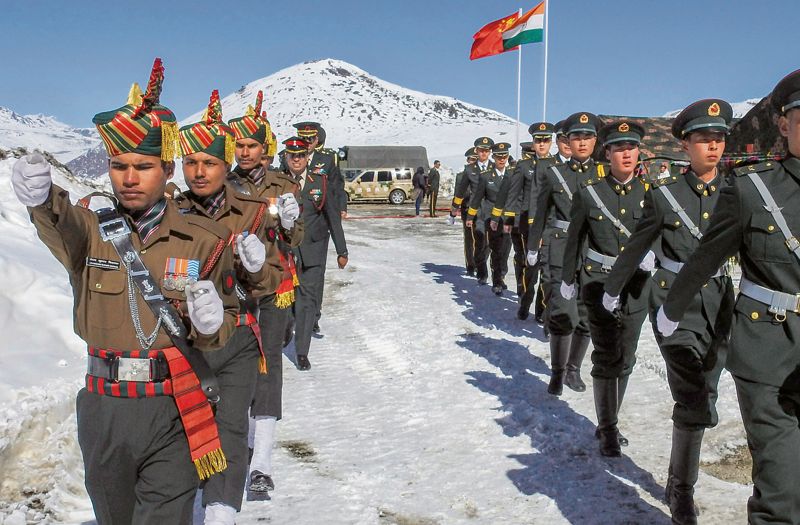
Ahmedabad, May 28
External Affairs Minister S Jaishankar has said India faces a “very complicated challenge” from China, and the Narendra Modi government has taken steps to ensure no attempts are made to change the status quo in the border areas unilaterally.
This challenge was “very visible” in border areas in the last three years, Jaishankar said on Saturday, adding that both the countries have to find an equilibrium in relationship, but it cannot be on the terms of the other party.
If peace and tranquillity between the two nations is disturbed, their relationship will not remain unaffected, the minister said, delivering a talk on ‘Modi’s India: A Rising Power’ at the Anant National University here.
“When I talk about big powers, of course we have a particular challenge from China. That challenge is a very complicated challenge, but in the last three years it has been particularly visible in the border areas,” Jaishankar said, apparently referring to China’s incursions in eastern Ladakh.
“There are clearly responses that are required, and those responses have been undertaken by the government. And a lot of it to ensure that no attempt is made to unilaterally change the status quo in the border areas,” he said.
The two countries will have to find some kind of equilibrium, and all the past governments in their own ways tried to find a balance, the External Affairs Minister said.
“But that balance cannot be on the terms of the other party. Then it is not a balance. There has to be something mutual,” he said.
Mutual respect, sensitivity and interest have to be the basis of the relationship, Jaishankar said.
“How can we get along long term if you don’t respect me, if you are not sensitive to my concerns, if you ignore my interest?” he said, adding that if India sees respect, sensitivity and recognition, it can think of a better relationship with China.
“But if we do not, I think we need to stand up for our rights, and we need to be firm in asserting opposition. And that, unfortunately, currently is the situation,” he said.
Talking about India under Prime Minister Narendra Modi, Jaishankar stressed on the strengthening of relationship with immediate and extended neighbouring countries.
Neighbours like Bangladesh, Nepal and Bhutan, which have always been close to India, are today linked with us through roads, railway, waterways and electricity grid connections, he said.
“The linkage and perception today of India in the neighbourhood has changed, and nothing illustrated that more dramatically than what happened to Sri Lanka last year when it went through a very deep economic crisis,” he said.
“And we have actually stepped forward in a way in which we ourselves never have before. What we have done for Sri Lanka is bigger than what the IMF has done for Sri Lanka,” he said.
The Rajya Sabha member from Gujarat also said the Modi government is trying to expand the neighbourhood.
“When I speak of the neighbourhood, I think a big change of our Indo-Pacific…strategically, what happens there concerns us very much. At the same time, there are other big changes happening, changes which include the rise of China, which includes, in a way, how the US has become much more cautious about its own commitments,” he said.
The Quad countries are today discussing maritime collaboration, infrastructure connectivity, 5G and vaccines, among other issues. India is also interacting with a group of countries to its West, such as Israel, United States and United Arab Emirates, Jaishankar said.
“Under PM Modi, we are not thinking just of tomorrow, we are not even thinking of the next term. We are thinking really beyond. And in many ways, without exaggerations, we are today laying the foundation of what is the global footprint,” he said.
The rise of India has a very special significance in the world as the only comparable rise was that of China, Jaishankar said.
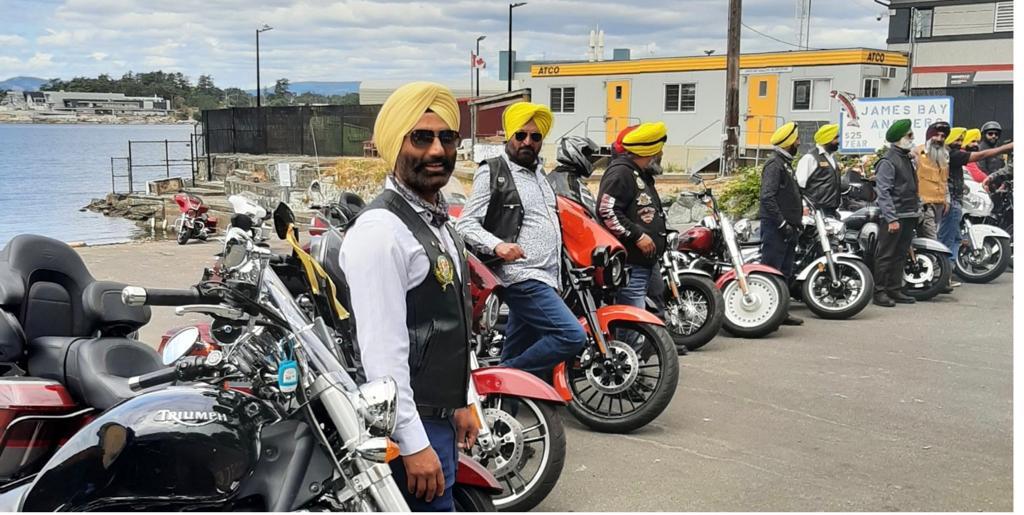
Toronto, May 28
The government in Canada’s Saskatchewan province has granted Sikh motorcyclists a temporary exemption from wearing helmets during special events like charity rides.
The move comes after the Legendary Sikh Riders, a motorcycle group based out of British Columbia province, had asked Saskatchewan to consider a change to allow them to ride across Canada to raise money for charitable causes.
While there are permanent, blanket helmet exemptions for religious reasons in provinces of British Columbia, Alberta, Manitoba and Ontario, Saskatchewan, law requires all motorcyclists to wear helmets when operating a motorcycle on public roads.
“Helmets are an essential piece of safety equipment for motorcyclists,” Don Morgan, Minister Responsible for SGI, said.
The amendments to the Vehicle Equipment Regulations will be temporary and will not grant blanket exemption for all members of the Sikh religion to ride motorcycles without a helmet, according to a media release by the Saskatchewan government.
“While we have no plans to introduce a blanket exemption to motorcycle helmet laws, our government sees this provision for temporary exemptions as a fair compromise that will enable future charity fundraisers to proceed,” Morgan said.
The exemptions will have to be approved by the minister responsible for Saskatchewan Government Insurance (SGI) and would be limited to members of the Sikh community, who wear turban as an expression of their faith and are unable to wear helmets.
Any exemption granted would not apply to passengers or riders who are still learners or in their home province’s graduated driver licensing programme.
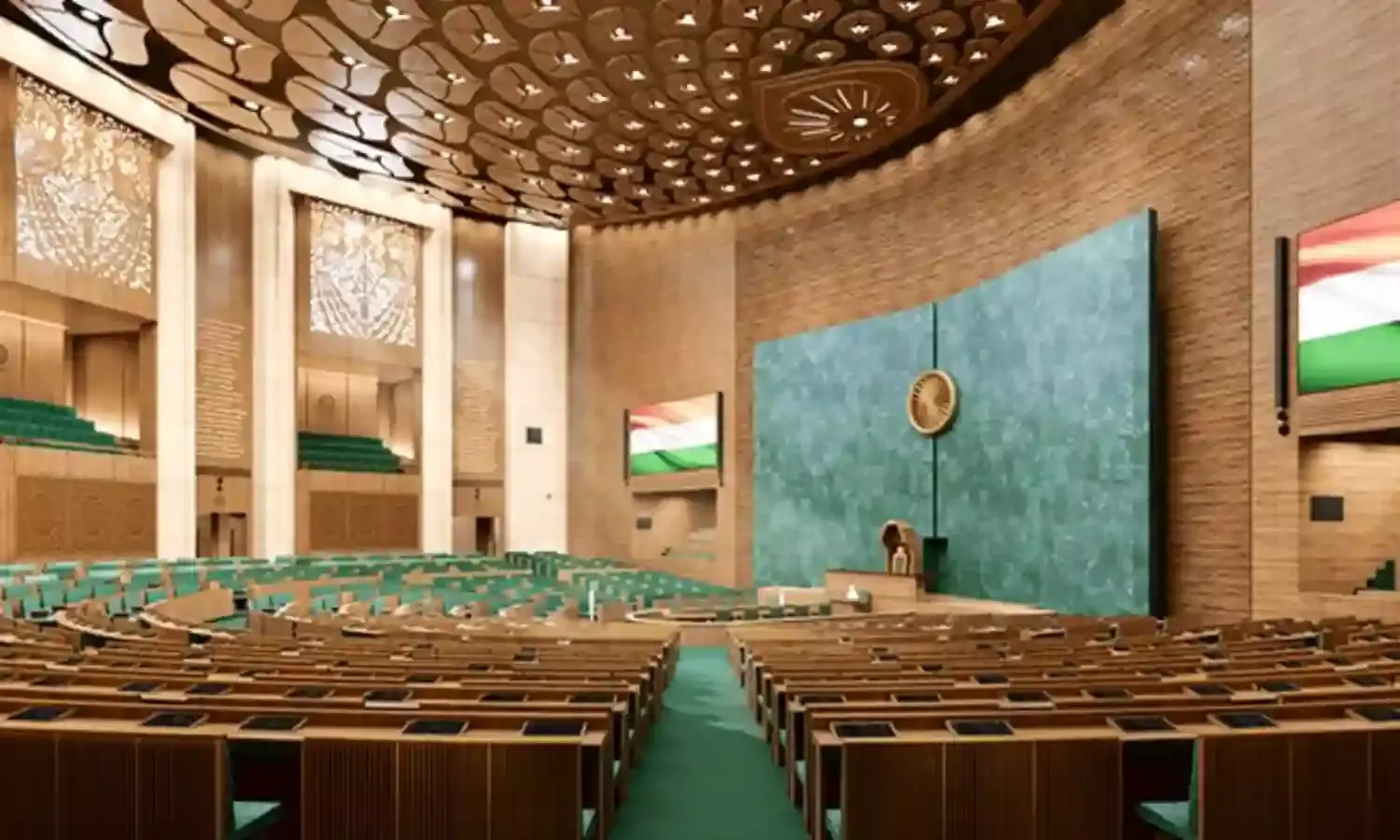
A new Parliament Building is being inaugurated on Sunday 28 May 2023 and since every action in our country becomes ‘political’, we have been in the midst of heated discussions, mostly unhealthy, about the event. Before looking at the event in a balanced manner and avoiding any partisanship, which in any case does not come easily to a military mind like mine, let me say a few words about the importance of Parliament in a nation that adopted Parliamentary Democracy as its form of government, even before it gained its Independence on 15 August 1947 from its colonial masters. Also Read – Can A State Declare a Film Tax Free? The Constituent Assembly gave it permanence and of paramount importance when the Constitution of India formally adopted it on 26 Jan 1950, with the resounding commencement, meant to ring in the ears of all citizens of India, irrespective of caste, creed or religion the opening words: “We the People…..”. Our Constitution touches the heart of every citizen of our country, but perhaps it is the Indian Military for which it is most sacrosanct. We, all ranks of the Army, Navy and Air Force comprising the military, are the most important defenders of our Constitution, for which we have in the past, and will do so today and in the future, give even the ultimate sacrifice of our lives. We do so shunning all aspects of politics, for that is our creed. Also Read – Erdogan Set For A ‘Legacy Term’, West Worried Those who have strayed from this sacred path lately, for a variety of reasons, need to be brought around to the ‘straight and narrow’ path laid down for us by our predecessors, whose personalities, sterling leadership qualities and moral upbringing have left indelible marks on the military psyche. For those who have strayed, especially in recent years, my appeal is to revert back or in political parlance of the day, do a real “Ghar Wapsi”, devoid of religious connotations of any form. Also Read – Smelting Manipur But I am straying, for this piece is about the soul of our Parliament, which must be inviolable in both ‘mind and matter’. Over our journey of Independence of 75 years, while the ‘bricks and mortar’ of the building have held, it has been shaken from within because our elected leaders and their advisers have succumbed, to put it mildly, to ‘political expediency’, forgetting their core tasks for which they were elected. This has eclipsed good governance and all it encompasses and brought out all the baser emotions, instincts and values that should have been cast aside before our worthy Parliamentarians had stepped into the sacred portals of this supreme institution – the Parliament of India. Also Read – The Underbelly A brief about how and when and by whom the Constitution was written may be in order, for very few of our citizens know of these details, as the focus has rightly been on the contents. However, since lately ‘optics’ have become more important than ‘substance’, let me also put in at least one Rs. 2000 pink note worth of my wealth before I deposit it in exchange for smaller denomination currency notes! The Constitution of India is the longest hand written Constitution of any country in the world. It was originally written in Hindi and English. Prime Minister Jawaharlal Nehru wanted it handwritten in a flowing italic style. Prem Behari Narain Raizada (Saxena), a noted calligraphist, was chosen for the task. Before Raizada commenced writing, Nehru asked him about the task remuneration. “Not a single penny” was his answer, but he asked for writing his name on the last page, or, so the story goes and his wish was granted! While Raizada wrote, noted artist Nandalal Bose and his students of Visva Bharati (Shantiniketan, West Bengal) took to embellishing the borders of each page of the Constitution. Bose not only used narratives from ancient Vedas, Mahabharata, Ramayana, but also depicted modern tales of Mahatma Gandhi and Netaji Subhash Chandra Bose. The section on Fundamental Rights features a scene from the Ramayana; Gandhi’s Dandi March is depicted in the section on official language; in Part XIX, Bose is seen saluting the flag; Tipu Sultan is painted in Part XVI; King Ashoka can be seen propagating Buddhism in Part VII, while torrential ocean waves are sketched in Part XXII, the last section of the Constitution that mentions the commencement and repeals. On January 24, 1950, Dr Rajendra Prasad, the first President of India, became the first person to sign the Constitution of India, while Feroze Gandhi, the then President of the Constituent Assembly was the last one to sign. The Armed Forces of India have been called up to defend the nation and consequently our constitution innumerable times, but one that rankles most is how the Armed Forces were kept in suspense when they were raring to go from December 2001 to nearly the whole of 2002. I am referring to the covert attack on our Parliament on December 13 2001, and Operation Parakram that followed. I had superannuated only two months earlier as the Vice Chief of Army Staff and had been interacting with most of the dramatis personae who were prominent players in the event. In India, the government in power was a coalition of National Democratic Alliance, with Atal B Vajpayee as the Prime Minister, while there was military rule in Pakistan, with General Parvez Musharraf as the President. Other Indian Ministers who were part of the Cabinet Committee on Security (CCS) were Deputy and Home Minister LK Advani, Minister of External Affairs Jaswant Singh, Minister of Finance Yashwant Sinha, and Minister of Defence George Fernandes. The attack on the Parliament was a major intelligence and internal security failure. Many individuals and agencies were responsible for this failure, but since no details of the investigation are available in the public domain, one can only speculate about involvement of Indian Citizens. The post-incident actions of the government were a mix of action and restraint for two reasons. First, the highest policy-making body being the target, severe action was called for and second, the government felt that the serious nature of the incident would invite severe blame on the political leadership. Hence, the military option became the preferred option from the very first day. The actions of the government were later informally referred to as ‘Coercive Diplomacy’, but the chain of events and decisions did not have any ingredients of the latter. The definition of ‘Coercive Diplomacy’ states: “Attempt to get a target, a state, a group (or groups) within a state, or non-state actors: to change their objectionable behavior through either the threat to use force or the actual use of limited force”. The reality was that there was hardly any diplomacy in the early days; India ordered its military to mobilise immediately after the incident and commenced mobilization of the entire Indian Military, both on the international border (IB) and on the LoC in J&K. For clarity, the timelines are listed below: . Terrorist attack on Parliament on December 13 2001; 12 persons were killed, including the five who had attacked. The Armed Forces were ordered to carry out full mobilization. . On December 14, the Indian Government formally blamed Pakistan-based LeT and JeM for the attack. India also demanded, through a demarche to Pakistan, that Pakistan stop activities of LeT and JeM; apprehend their leaders and stop supporting these groups. . Pakistan placed its military on high alert on December 14 2001. . By January 2002, India had mobilised around 500,000 troops, including its three Strike Corps and Pakistan had responded in a similar fashion, deploying around 300,000 troops. On account of a non-existing National Security Strategy, the Indian Armed Forces were planning various military strategies in a vacuum, while the policy makers were actually making political decisions without really knowing what the armed forces should aim for. Despite this, while mobilisation was going ahead, military and political plans kept changing. Sadly, even today, the Nation has no formal National Security Strategy. Although the Indian Military had considerable edge over the Pakistani Military and our economy was doing well, it appeared that the political and military leadership were not on the same page, as could be discerned from statements of the Prime Minister and other political leaders. The nuclear factor did play in the final decisions of not adopting the military option. The Indian Military was ready to take the calculated risk, but apparently the civil leadership backed out. The nuclear factor did prompt the global players to act fast and in the final analysis, it was the danger of escalation from conventional to nuclear level that prompted the protagonists to de-escalate. India needs to revisit its nuclear policies for the future, and the political leadership needs to ‘bite the bullet’ at the appropriate time in future. The Indian casualties were up to 1,874, including 798 fatalities, mostly on account of battle accidents. Pakistani casualties were not divulged. For India, the cost for the build-up was US $3 to $4 billion, while Pakistan’s was US $1.4 billion. The standoff led to a total of 155,000 Indians and 45,000 Pakistanis displaced, as per Pakistani media estimates. One of the reasons for the failure of Operation Parakram was the slow mobilisation of 500,000 troops. It took nearly three weeks for India to move 500,000 troops, including three armoured divisions, and other supporting units to their Forward Concentration/Assembly Areas. The delay allowed Pakistan to move its own 300,000 troops, along with the supporting units to the border. Lacking strategic surprise, operations could not be launched in accordance with initial plans. The mismatch between political and military thinking, especially in nuclear issues, needs to be bridged and ‘political will’ must be exhibited at crucial junctures. This will happen only when the armed forces hierarchy becomes part of the policy-making loop on a permanent basis. In addition, the present government policy of deep selection among the seniormost hierarchy of the three services and selection of a CDS is abandoned, as all it does is to weaken the spine of contenders, who literally ‘stoop to conquer’ in the run-up. I call it the ‘Darbari Culture’, which is not at all good for the nation and certainly a big drawback for the armed forces. Lt General Vijay Oberoi is a former Vice Chief of Army Staff and the Former Founder Director of the Centre for Land Warfare Studies (CLAWS), and now its Director General Emeritus. Views expressed are the writer’s own.
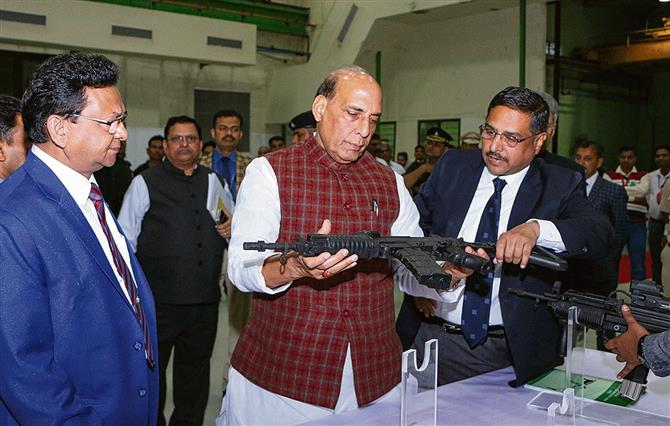
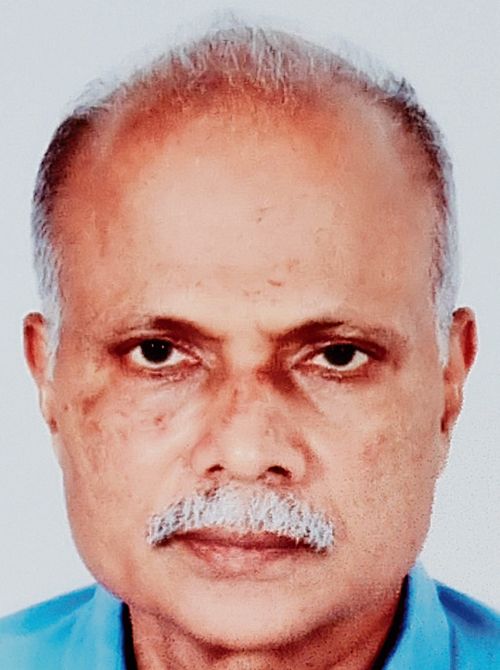
FANS of philologist JRR Tolkien and his lore would be familiar with Anduril and Palantir as, respectively, a magical sword and a crystal ball that shows things afar, including in the past. But Anduril and Palantir hitting the headlines are not magical relics of yore, but defence companies that came up from America’s technology startup ecosystem to develop high-tech military capability, and figure among the defence startups proving their spurs in the war in Ukraine.
China is preparing for the high-technology denial regime in which the US wants to cage its acknowledged systemic rival.
A Chinese unicorn has successfully produced microchips with circuitry that is 20 micron thick. That is a far cry from the 7 or even 4 micron circuits that power the latest generation of advanced chips from Korean and Taiwanese companies that are under American pressure to stop selling their ware to China or Chinese companies. Dozens of unicorns are coming up in China in the areas of microprocessors, robotics and artificial intelligence, as China races to prepare for the high-technology denial regime in which the US wants to cage its acknowledged systemic rival, to cap its capabilities in areas of core strategic competence.
India has also begun to use the startup ecosystem to gain capabilities that Indian companies do not have, that are vital to achieving and retaining strategic parity with other major powers and are at risk of being withheld by foreign suppliers, if access to them is managed entirely through imports. India has to do a whole lot more in this area; it has the requisite talent, opportunity and financial resources.
In this light, a recent initiative by defence shipyard Garden Reach Shipbuilders and Engineers Limited (GRSE) is most welcome. The GRSE has launched the GRSE Accelerated Innovation Nurturing Scheme (GAINS) for young entrepreneurs. The difference between GRSE opening its purse strings to any promising startup that could offer innovations in the company’s area of business and GAINS is that GRSE would first let would-be entrepreneurs familiarise themselves with its operations, so that would-be innovators know where innovations are possible and of what kind.
We are familiar with tales of Israeli youngsters coming out of their compulsory stint of military service with ideas for new technology that would aid the military work, and getting down to it, once they have let down their hair for a while on the heady slopes of the Himalayas. India’s bright young minds who join the military have a martial bent of mind and plan to become career officers, rather than tech entrepreneurs. So, in the Indian context, those who have domain knowledge of defence and those who possess technological or entrepreneurial capability tend to be two different sets with nil or minimal overlap. This cannot be overcome by liberal funding of military startups alone.Advertisement
When Covid struck, and India stared at an alarming shortage of ventilators, many agents came together to deconstruct the ventilator machine, identify its parts and components and those who could manufacture them. This swiftly resulted in the ability to produce ventilators in plenty. This method can serve as a rudimentary approach to encouraging startups in defence tech. This would help with indigenising and improving what already exists. It would not help innovative minds work on what could be. For that, those with an entrepreneurial orientation must be exposed to the work on the field of different wings of the armed forces, their planning and administration.
India faces multiple challenges in military capability. One is attaining parity or exceeding it in warfighting capability in terms of raw hardware capability. Another is the ability to integrate the diverse bits of hardware into information networks that yield analysis, integration of the results into actionable intelligence, again distributed among different execution agencies, to be acted on, with precision and speed. This second challenge is related to the new challenge our armed forces are grappling with — unified command and jointness.
There is much glib talk of artificial intelligence (AI) as a solution to complex decision-making. At present, the internal working of AI is a black box. If a piece of AI were to analyse information gathered by satellites, drones, spy craft, electronic eavesdropping and much else and propose that action X be undertaken by division Y of the infantry, rather than a strike by Air Force fighter planes as conventional analysis would indicate, would our Air Force and Army brass agree to bite their tongues and defer to the algorithm? Or should the aim be to develop automated decision-making that can articulate its reasoning and rationale?Advertisement
Can we offer final-year engineering students a choice to serve two years in the Army, to learn how it works, and think of what could make things work better? A rigorous process of selection could filter out a pilot batch of, say, 100 tech apprentice soldiers who are rotated through different parts of the services, spending time on operational aspects rather than on spit and polish, to see with fresh eyes what is done, what more could be done, and done differently. They could come out of the Army, submit projects to develop their solutions, for part-funding from the defence establishment, with the rest of the funding to be mobilised from venture capitalists more familiar with the feasibility of projects than colonels trained to see ‘can’t do’ with contempt.
The deconstructed ventilator model might be more appropriate for the chipmaking ecosystem. For true autonomy, India would need to make not just the chips, but chipmaking equipment as well. Instead of still thinner copper circuits created by flowing the vaporised metal into micro-grooves etched by laser on to silicon wafers, can we replace the electrons with photons?
For a viable startup system, we need not just liberal startup funding, but much larger outlays on R&D in general as well, to drive research in basic science as well as technology, so that the pool of knowledge and talent that the startup ecosystem can draw upon is wide and deep enough.
Half the publicity outlay of the government could be diverted to this end, perhaps?
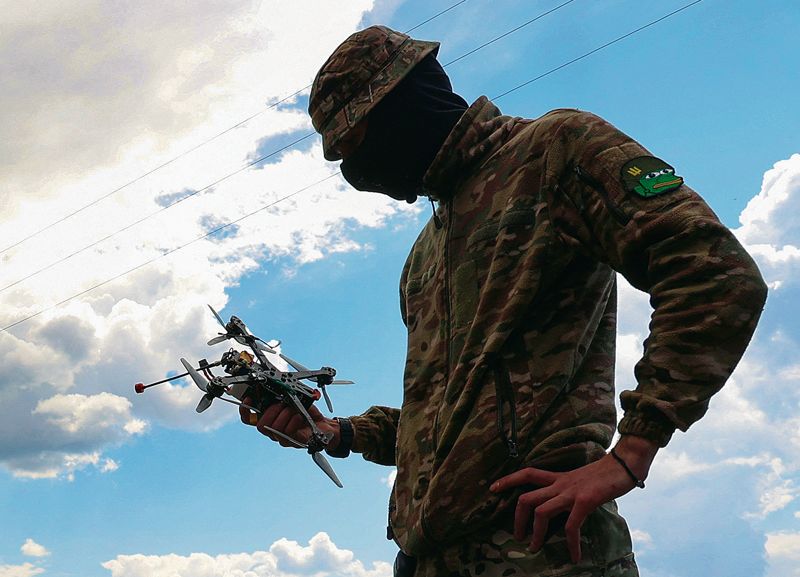
Advertisement
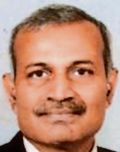
Advertisement
THE ‘Global War on Terrorism’, launched by the US after the 9/11 attacks, has run out of steam following its chaotic withdrawal from Afghanistan in 2021. American priorities regarding terrorism have traditionally centred around its own interests, leading to ambivalence towards entities such as Pakistan-based Lashkar-e-Taiba chief Hafiz Saeed and fugitive underworld don Dawood Ibrahim. Almost 15 years after the Mumbai terror attacks, a US court recently consented to India’s request, submitted through the US government, for the extradition of Pakistani-origin Canadian businessman Tahawwur Rana, who is a 26/11 accused along with Hafiz and others. It was in 2019 that India had declared Hafiz, Dawood and Jaish-e-Mohammed chief Masood Azhar as terrorists under the amended Unlawful Activities (Prevention) Act.
Recent incidents in Syria have strengthened the case of terror-hit nations such as India to undertake remedial action. Late last month, the Turkish intelligence forces claimed to have neutralised ISIS leader Abu al-Hussein al-Husseini al-Qurashi. Earlier, US forces, along with the Syrian Democratic Army in one case and by the Central Command in another, took out two prominent ISIS leaders in northern Syria — Hamza al-Homsi and Ayyd Ahmad al-Jabouri. All three were killed apparently in airstrikes.
Having suffered cross-border terrorism for over three decades, India ought to have an actionable, prioritised ‘terror target’ list. Freedom from terror would be a mandatory prerequisite for the nation to fulfil its economic and strategic aspirations. Accurate intelligence and precision strike capabilities would be the bulwark of any effective aerial counter-terror campaign. It’s also time to look at ‘grey zone’ operations, such as special forces and intelligence-based hard kills. The advent of military jet packs and body suits for paratroopers offers interesting possibilities to augment the surprise element of the special forces. To achieve force multiplication, the integration of the Garud Commando Force and MARCOS (Marine Commandos) with the counter-terror campaign would be well advised.
The April 20 Poonch ambush makes it clear that there will be no let-up in terror attacks. Even as former Pakistan army chief Gen Qamar Javed Bajwa has admitted in an interview that his country’s army is ill-equipped to wage a conventional war against India, a desperate Pakistani establishment could opt for more terror strikes along the LoC.
Air power has been the preferred option — virtually the silver bullet — for nations to deal with international and cross-border terrorism. India’s reluctance to take recourse to this vital element of military firepower against terrorist elements could, perhaps, be on account of the government’s fear of aggravation of the existing conflict. Deniability, therefore, becomes an important aspect of any modern air-launched anti-terror campaign, pushing the case for India to have special forces and UAV capabilities built into the force framework. A parallel strategy would be political and military signalling. The 2019 Balakot airstrikes, executed days after the Pulwama terror attack, were an example of conveying a stern message effectively.Advertisement
Military Operations Other Than War (OOTW) such as PsyOps and cyber warfare are other doctrinally exploitable options to achieve results in a counter-terror campaign. Improvements in hard-kill capabilities of UAVs (both in terms of potency of warheads and secure, unjammable means of guidance), along with improved electronic intelligence-gathering techniques, would weigh in favour of the attacker. Circumstances would dictate whether fighter aircraft, attack helicopter or drone-based neutralisation of terrorist entities is optimal. Besides, these have the advantage of limiting collateral damage, especially in hair-trigger situations.
Advancements in night vision optics and improved stand-off ranges further facilitate the execution of an air war on terror targets. Aggressive and continuous training would be important, too, to form a competent team of combat pilots and support teams specially picked for the role. Needless to say, given the timely decision-making and political will to push for results, punitive airstrikes would be the best option to make a statement against a terror-mongering neighbour. An all-out war may not be a strategically viable option.
Notwithstanding the perception that India would desist from taking strong action against terror elements operating from Pakistan during its current presidency of the G20 and the Shanghai Cooperation Organisation, there is a need to prepare the armed forces for any eventuality. The latest drone attack on Russian President Vladimir Putin’s Moscow palace, regardless of the controversy over who actually carried it out, would bolster the viability of drones to neutralise major targets. Despite limitations in range and effective hardware, the Ukrainians managed to send a strong message to the Russian leadership. Accurate intelligence and more capable drone guidance technologies would enable enhanced anti-terror airstrikes in various parts of the globe.Advertisement
India’s indigenous drone programme needs to deliver expeditiously in this area, more so since cutting-edge technology for such targeting would not be readily available in the international market. We have the wherewithal in terms of indigenous space-based assets to facilitate remote UAV targeting. It is little wonder that even the proposed sixth-generation US Next Generation Air Dominance platforms would have integral drones, indicating the inevitable shift towards unmanned aerial warfare.
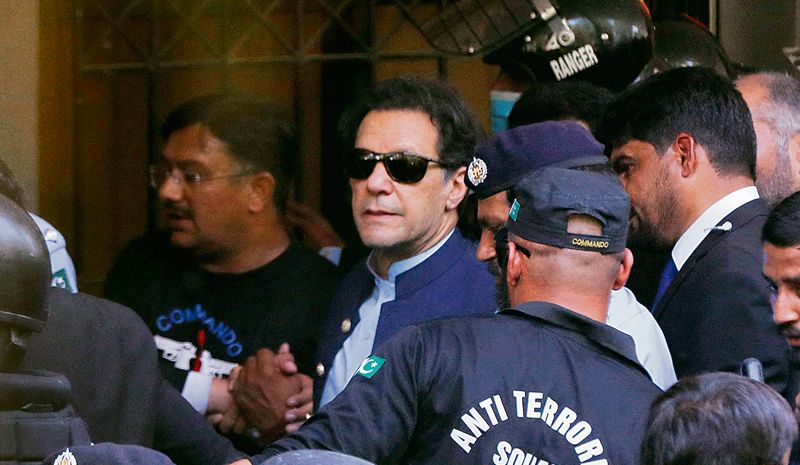

Advertisement
HAMARI Fauj Hamara Fakr (our army, our pride) is the slogan on one of the banners hanging in the busy streets of Karachi, Pakistan’s prime financial city, as the Pakistani establishment — a term colloquially used to refer to the Pakistani army — carries out its damage-control exercise after the embarrassing scenes of May 9. Ever since that episode, marked by rioting, including violence on the premises of army installations, the establishment has struck back, with thousands of political activists arrested.
First, it will be wrong to see the developments over the last few weeks as something of a revolt against the Pakistani army and a cry for civilian control. It is inherently a power struggle in which a former protege of the Pakistani army, ie former Prime Minister Imran Khan, has become a Frankenstein’s monster. The victimisation of Imran and his supporters is a replay of how he as the PM dealt with the then Opposition and critics. In view of the vicious verbal attacks by Imran against the Pakistani army leadership, the reaction of the deep state has been ruthless.
At the core of this saga is the ego tussle between current army chief Gen Asim Munir and Imran. It goes back to Gen Munir’s tenure as the ISI Director General (DG) when he had apprised the then PM Imran about the alleged corrupt dealings of his wife, which had resulted in his (DG’s) transfer.
Second, the power struggle comes in the background of a perceived politicisation of the judiciary. The 18th Amendment to the Pakistan Constitution, passed by the National Assembly on April 8, 2010, aimed to plug the structural anomalies that had arisen because of repeated military coups. It gave a semblance of federal autonomy to the provinces and the Eighth Amendment to the Constitution of Pakistan that gave the power to the President to dismiss any elected government was removed. The then ruling Pakistan People’s Party (PPP) leadership agreed to the passing of the 19th Amendment in December 2010, which diluted the power of the parliament to consider the conduct of judges and their appointments.Advertisement
Recently, Pakistan’s Foreign Minister Bilawal Bhutto Zardari informed the parliament that they had had to compromise in passing this provision. This was a hint to the fact that otherwise, the then Chief Justice Iftikhar Chaudhry may have declared the 18th Amendment as a negation of the basic structure of the constitution. In the ratifying body of the appointment of judges — the Judicial Commission of Pakistan — there is a six-judge majority in the nine-member commission. In this connection, Pakistan Muslim League-Nawaz (PML-N) leader Mariam Nawaz’s recent public utterances against Chief Justice Umar Ata Bandial after he allowed bail to Imran are not a surprise. Interestingly, the judge next in line to the post of chief justice is considered to be not to Imran’s liking.
Three, going by the social media metric, it may seem that Imran is invincible electorally. This may be true in a given context as apart from people being smitten by his celebrity appeal and the establishment of a premier cancer charitable hospital by him, a considerable percentage of the urban and semi-urban population is tired of baradari (caste-based) politics.
However, the PML-N’s control over Punjab, which is the most populous and electorally decisive province in Pakistan, cannot be underestimated. The prevalent structure of baradari politics in rural areas with a population of 70 million against 40 million in the urban areas of Punjab is a factor that cannot be ignored. In many contexts, across the world, we have seen that the social media metric and street power are not the same as the electoral strength on the ground. In this regard, the PML-N, founded in 1988, has considerable political capital as also skills to influence the verdict in Punjab. This was manifested in its recent political engagements with local actors such as the Chaudharys of the PML-Q (Quaid-e-Azam) in the Gujrat area of Punjab. The case of the PPP’s cadre in the non-Karachi area of Sindh is no different.Advertisement
Four, like in other parts of the Global South where the army is the predominant institution, the Pakistani army has mastered the art of machination required to thwart internal critics questioning its supremacy. It has launched a campaign to bring the “arsonists who attacked the civil and military installations to justice through trial under relevant laws, including the Pakistan Army Act and Official Secrets Act.”
The resignation of some senior leaders of the Pakistan Tehreek-e-Insaf (PTI) and the toning down of Imran’s tirade against the army leadership in the past few days indicate that these actions have had an effect.
Overall, the fundamentals of Pakistan’s internal polity remain as they were before May 9. This is also true of the external factors that possibly influence its polity. After he lost the no-confidence motion in parliament, Imran accused the Joe Biden administration of being instrumental in the ‘regime change’ as he had refused to give Pakistani airbases or airspace to the US for its counter-terrorism operations. There is no such grandstanding now. In fact, through various interviews and reported hiring of lobbyists in the US, efforts have been made to improve his ties with the Biden administration.Advertisementhttps://6e13fd6e218cff2a8feaa2db4b762de5.safeframe.googlesyndication.com/safeframe/1-0-40/html/container.html
India-bashing and Kashmir-related rhetoric are potent toolkits for politicians to increase their popularity in Pakistan. Imran is no different. In contrast to Imran’s allies, the current alliance partners — the PPP and PML-N — are experienced entities. They know that political will is not the only vector in the conciliation efforts with India as they involve heavy lifting on many fronts.
On the whole, the international community should be careful about perceiving the current power struggle in Pakistan as a fight for civilian supremacy. It is innately a classic tussle between powerful individuals and institutions that have become adept at selectively using the lexicon of democracy, rule of law and the Constitution to their advantage.

























































